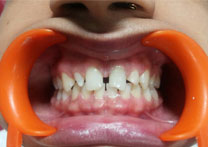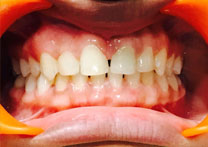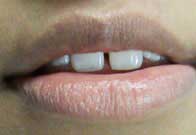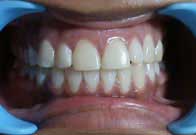Malalignment of teeth is also known as Malocclusion and is a matter of concern as it can cause serious dental health issues. The malalignment of teeth can be of various types such as crowded teeth, underbite, crossbite, overbite and open bite. It becomes difficult for teeth to perform their vital functions because of this malalignment.
Occlusion is referred as the alignment of teeth. Ideally, the teeth should be able to easily fit inside the mouth without any issues. They should neither be twisted nor rotated. Only the upper jaw teeth should overlap the lower jaw teeth slightly. Any kind of deviation from such occlusion is termed as malocclusion or malalignment. The misalignment can vary from person to person, but all of them cause trouble. Upper teeth should be aligned properly to avoid cheeks as well as lips from getting bitten, while the alignment of lower teeth is mandatory to prevent the tongue from getting bitten.
The factors causing malaligned teeth:
Malalignment can be hereditary which means they can be passed on from generation to generation. However, some conditions which change shape or structure of jaw are:
- Using a pacifier frequently after age 3
- Bottle feeding for a longer period in childhood
- Habit of sucking thumb in childhood
- Any injuries which may have caused the malalignment
- Abnormally shaped teeth
- Poor dental fillings or fittings like crowns and braces
Symptoms of Malalignment
- Improper teeth alignment
- Any alterations made to the face appearance
- Biting inner cheeks and tongue frequently
- Discomfort while chewing
- Speech problems and slip
- Mouth breathing instead of nose

Before

After

Before

After
Classification of Malalignment
Malalignment of teeth is diagnosed with a routine dental check-up. The dentist will perform an examination of your teeth along with dental X-rays to find out if teeth are perfectly aligned. If the dentist finds any misalignment, it will be then classified by the type as well as severity.
- Class 1 misalignment is found when your upper teeth overlap your lower teeth. In this type of malalignment, the bite is found to be normal, and overlap is minor. This is the most common type of malalignment found with many people.
- Class 2 malalignment is found when there is a major overbite. This condition is termed as retrognathism which means that upper teeth, as well as upper jaw quite, apparently overlap lower jaw along with lower teeth.
- Class 3 malalignment is found when there is major underbite. This condition is also termed as prognathism which means that lower jaw appears little forward. The condition will cause lower teeth overlapping upper teeth as well as jaw.
Treatment for malalignment
There are many people with minor malaligned teeth which do not require any treatment. However, if your malalignment is major, the dentist might ask you to refer an orthodontist. Depending on the condition the orthodontist will prescribe treatment.
The treatment for malalignment includes:
- Braces which can resurrect the teeth positioning
- Removal of few teeth which cause overcrowding
- Reshaping of teeth or capping and bonding
- Surgery for Jaw to reshape or shorten
- Applying wires and plates for stabilizing jaw bone
